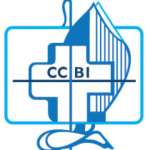By M L Satyan
Bengaluru, Sept 13, 2022: During Covid-19 period (April 2020) a circular from the Archdiocese of Bombay went around through WhatsApp. The title was: “Attending the Eucharist online.” The main message read: “Though you will be viewing the Mass online, do remember that you are in the presence of an actual celebration of the Eucharist.”
There were five instructions:
1) Prepare a table. Cover it with a clean tablecloth and place a lit candle and crucifix on it.
2) Dress appropriately. Be respectful in your attire.
3) Participate. Be attentive to the readings and the homily. Join the celebrant in the prayers and responses of the faithful. Join in singing the hymns.
4) Avoid distractions. Give the Eucharistic celebration your whole attention. Switch off all electronic devices/mobiles. For this one hour, let your home become a church.
5) Be aware of the presence of God. Pray the Spiritual Communion prayer. Spend time in quiet reflection at the end of Mass. Express your gratitude to God.
The footnote said: “Attend the online Eucharist celebrated by His Eminence, Oswald Cardinal Gracias, on April 19, 2020 at 9.00 am”.
At that time, I had raised a few questions to the clerical groups of all denominations:
1) When the people of Hindu faith watched Ramayan TV serial with reverence, you called it superstition. What should we call your online Mass?
2) When Hindus did this, it was wrong and when Christians do the same, it is right. On what basis?
3) While promoting online Mass, you tell the people that ‘they are in the presence of an actual celebration’. Watching Ramayan is ‘Fake’ and watching online Mass is ‘Real’ for you. How do you justify it?
4) You discourage the lay people from watching commercial TV serials and movies, but sitting in your rooms, you watch TV serials and movies of all categories. Can you practice what you preach?
5) The 4th instruction says, “For this one hour let your home become a church.” Do you mean that God is present only while watching an online Mass, and that too for one hour? The Bible says, “Wherever two or three gathered in my name, I am in their midst” and “Where there is love there is God”? How do you explain this?
In India, especially in southern states, we are witnessing in the recent years that many new television channels have been started by Christians of different denominations. These channels telecast Sermons, Retreats by charismatic groups, Songs, Eucharistic adoration, Mass, Recitation of rosary, Prayers, Interviews/Debates, Testimonies, and Biblical dramas and Skits. These things go on 24×7. The focus of all the above programs is the importance of worshiping Jesus. Sadly, the poor carpenter’s son Jesus of Nazareth has been converted into an ‘object of worship’ and a ‘commercial commodity.’
Recently Pope Francis addressed the Italian Association of Professors and Practitioners of Liturgy on the occasion of the 50th anniversary of the organization’s foundation. The Pope insisted that progress in the understanding of the liturgy and the art of celebrating it “must always be rooted in tradition.” At the same time, he warned of a worldly spirit of going backward.
Going back to the roots, he said, does not mean going backward, but instead means allowing true tradition to lead one forward. He cautioned liturgists to carefully distinguish between tradition and “traditionalism,” warning that “today the temptation is ‘backwardness’ disguised as tradition.”
As per the tribal culture in Jharkhand, Chhattisgarh, Madhya Pradesh and Odisha and also according to various religious traditions there are ceremonies that are performed at home from the birth to death of a person. When some ceremonies are given a religious coloring, they become sacred or holy.
A Tamil book named “Viduthazhai Vizhaakal” (Liberating Festivals) contains a chapter titled: “Sacraments from Home to Church”. The author had done research on the origin and growth of the sacraments as per the Church history and spelt out clearly how the traditional ceremonies, celebrated at homes, were moved to church buildings and given a religious coloring by calling them Sacraments. This was done by the clergy with a selfish agenda to make them “clergy-centric” and for an “income generation”.
For a vast majority of the laity of middle and upper middle class, the First Holy Communion, Confirmation, Marriage, Ordination to priesthood have become a “status issue”. The “extravaganza” exhibited on such occasions are beyond description. Adding to this, is the “Jubilee Celebrations” by a vast majority of the clergy and nuns as well as a minority lay people.
“Saying prayer” and “praying” are two different things. In every ceremony the prayer from “prescribed text” from the Ritual Book is said or read. There is no scope for praying or spontaneous prayer. Adding to this is all the “paraphernalia” that are in tune with the Roman style.
Let us read the following passages for introspection. “When you lift your hands in prayer, I will not look at you. No matter how much you pray, I will not listen, for your hands are covered with blood. Wash yourselves clean. Yes, stop doing evil and learn to do right” (Isaiah 1:15-17).
“The more of you priests there are, the more you sin against me, and so I will turn your honour into disgrace. You grow rich from the sins of my people, and so you want them to sin more and more.” (Hosea 4:7-8).
“But when you pray, go to your room, close the door, and pray to your Father, who is unseen. And your Father, who sees what you do in private, will reward you.” (Mt. 6:6)
“All the believers continued together in close fellowship and shared their belongings with one another… they had their meals together in their homes…praising God and enjoying the good will of all the people” (Acts 2: 44-47).
The second Vatican Council granted freedom to celebrate the sacraments/liturgies as per the local language and culture. Except the late bishop George Saupin, Fr. Bede Griffiths, Fr. Amalorpava Dass, Fr. Deenabandhu, Swami Sadanand and a few priests of IMS congregation, no one ever tried to implement the instruction of the second Vatican Council pertaining to liturgy.
It is high time for the authorities of the Catholic Church to make a paradigm shift from the present ‘pyramidal model’ to the ‘circular model’, adopt inclusive/participatory approach, exhibit the values of accountability, transparency and service, form and strengthen the Basic Christian Communities, conduct meaningful liturgies that are related to daily life and make every home become a true church.









